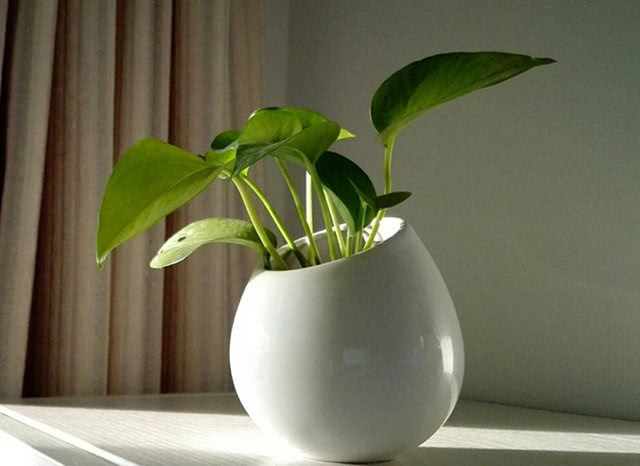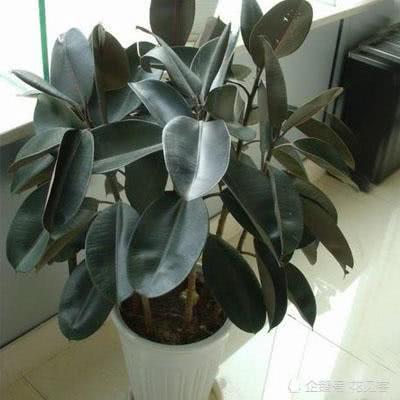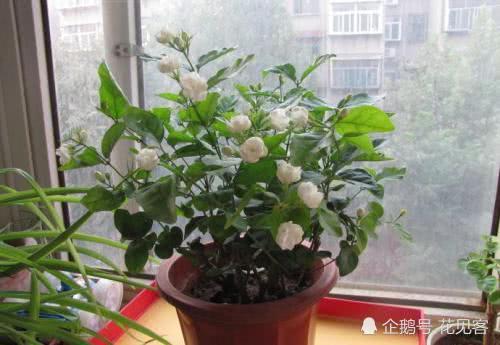Green pineapple leaves are yellow and thin? The reason is here.

Green pineapple, also known as Pueraria lobata, is a perennial evergreen vine of the genus Araceae, native to the tropical rain forests of the Malay Peninsula of Asia and Brazil of South America. Green pineapple, as a shade-tolerant foliage plant, is very suitable for indoor cultivation and ornamental. It is a rare indoor potted foliage plant.
Potted soil and upper basin method
The pot soil for the cultivation of green pineapple should be mixed with 3 rotten leaf soil, 3 garden soil, 3 river sand and 1 barnyard manure. When the root system of the underground part of the green pineapple seedlings propagated by cuttings grows to about 5 cm, and the shoot of the aboveground part grows to 5-7 cm, it can be planted directly in the pot. Three seedlings are planted in a triangle with a diameter of 33 cm in a glazed basin, which is easy to form a plant shape.
After putting on the basin, put it in the ventilation shade to avoid direct sunlight; spray water 3 or 4 times a day to increase air humidity and keep the basin soil moist. After the seedlings resume their growth, they can be transferred to normal maintenance and management. The young plants can change the pots once a year, and the adults can change the pots every 1-2 years.
Watering method
Green pineapple likes to be wet, and the basin soil should be kept moist in spring, summer and autumn. The basin soil is easy to turn yellow if the leaves are too much. But too much watering causes stagnant water, which can lead to rotten roots and withered leaves. Generally, water is watered every 2-3 days in spring and late autumn, and once a day in summer, and water is often sprayed on the leaf surface and the ground around it to increase air humidity and make the leaves bright green. Watering should be controlled in winter, and the surface of the basin soil should be watered after it is dry; on the contrary, too much watering and too wet basin soil will reduce the cold resistance and cause yellow leaves and rotten roots. In winter, the leaves can be sprayed with warm water every 3 to 5 days to keep the leaves bright and green.
Fertilization method
Green pineapple grows faster, and topdressing should be strengthened in the growing season. Topdressing should be based on nitrogen, and nitrogen, phosphorus and potassium fertilizer should be applied together. 0.1% urea and 0.3% 0.5% diammonium phosphate can be used, or 0.1% 0.2% urea solution and 0.1% potassium dihydrogen phosphate liquid fertilizer can be applied. 15%-20% mature cake fertilizer can also be applied. Topdressing is applied every 10 to 15 days from spring to early summer; the Summer Solstice is topdressing every 20 days in early autumn; and every 10 to 15 days in autumn; instead of topdressing the basin soil in winter, it is only necessary to spray leaves with 0.1% 0.2% urea solution every 20 to 30 days to make the leaves green and bright.
Lighting requirement
Green turnip bogey in direct sunlight, should be maintained under semi-overcast or scattered light conditions. It is suitable for indoor cultivation. Generally in spring, summer and autumn, green pineapple can be placed in the north or east window, and in winter in the south window, cultivate green pineapple outdoors, avoid direct sunlight, especially in summer, otherwise it will burn the leaf edge, make the new leaf smaller, and the leaf color is dim and dull. Outdoor maintenance can be placed in a well-ventilated shade shed, and the light transmittance of the shade shed is about 50%.
Reproduction method
Green pineapple is often propagated by cutting. There are two kinds of stem insertion and leaf insertion.
1. Stem insertion of green radish
It is usually carried out in spring and autumn. It is intended to select annual branches with bright leaves, thick leaves and strong growth, and cut the stem with about 15 cm long and 2-3 nodes as cuttings. Don't hurt the root when cutting cuttings. After cutting, the cuttings should be inserted into the plain sand in time, the depth of the cuttings should be 1 to 3, and the cuttings should be watered and placed in a shaded place, or the cutting seedbed should be shaded. Spray water to the leaves twice a day, often keeping the soil and air moist. In the temperature above 25 ℃ and semi-overcast environment, rooting and long leaves can take place in about 15-20 days.
2. Green radish leaf insertion
The method of leaf cutting is to use green pineapple leaves to cut. The advantage is that it does not destroy the plant shape. The method is to select the strong leaves in the middle and upper part of the branch, cut them from the base of the petiole with a knife, and then insert them into the water or matrix. Water inserts and takes root quickly, so it is suitable for families to reproduce in a small amount. When inserting, the depth of the petiole should be 1-1.5 cm. Too shallow, if the water evaporation does not replenish the leaf wilting in time; too deep, the petiole is easy to rot. Change the water once 5-7 days after insertion, and it can be planted in about 50 days. The cutting substrate should be mixed with fine sand and slag, and the substrate should be disinfected with exposure or ironing with boiling water before planting. Stick a hole with a bamboo stick when inserting, so as not to hurt the petiole, pour water after insertion, and pay attention to humidity and ventilation. Leaf insertion and germination is slow, which takes about 6-7 months.
Cuttings can also be propagated by water cuttings. Insert the cuttings into the water and plant them after taking root.
Matters needing attention
1. The leaves turn yellow and fall off, and the stems rot: it is mainly due to too much watering, especially in winter. Green pineapple requires good permeability of basin soil and avoid stagnant water in the basin. If you find this situation, you should change the basin in time.
2, the leaf tip curls and is brown: mainly because the air is too dry, should often spray to the leaf surface.
3. The leaf margin turns brown and withered yellow spots appear on the leaves: they are not watered enough in the growing season, and the basin soil can not be completely dried before watering. Totem pole plants should be careful to wet the posts when watering, because some roots grow on the posts.
4. The leaves become smaller: green pineapple must always grow upward at the top, as long as it bends downward, the leaves will gradually become smaller; there is not enough fertilizer or light.
5. The leaves become soft and curved, and the stems rot: due to the low temperature, the green pineapple is very sensitive to the low temperature below 10 ℃.
- Prev

Rubber trees don't grow when fertilized? Then bury some of its new buds and sprout and grow like crazy.
The rubber tree is a shade-tolerant leaf green plant, its leaves are exaggerated and glossy, thick and beautiful, evergreen all the year round, the top bud red is very similar to Fuyun, after the stipule is split, it looks like a red tassel, it is very beautiful, and it can be placed in the living room, study and other places.
- Next

After the jasmine blossoms continuously for the first time, we should use it to continue to bud and blossom.
Jasmine is a very common flower, deeply loved by flower friends, and is famous for its rich fragrance and long flowering period, known as "one can smoke a room of fragrance", and flowers can also be used to make tea as medicine. The flowering period of jasmine is mainly.
Related
- Wuhan Hospital Iron Tree Blooming Result Was Instantly Frightened by the Gardener Master
- Which variety of camellia is the most fragrant and best? Which one do you like best?
- What is the small blue coat, the breeding methods and matters needing attention of the succulent plant
- Dormancy time and maintenance management of succulent plants during dormancy
- Minas succulent how to raise, Minas succulent plant pictures
- What are the varieties of winter succulent plants
- How to raise succulent plants in twelve rolls? let's take a look at some experience of breeding twelve rolls.
- Attention should be paid to water control for succulent plants during dormant period (winter and summer)
- Watering experience of twelve rolls of succulent plants
- Techniques for fertilizing succulent plants. An article will let you know how to fertilize succulent plants.

